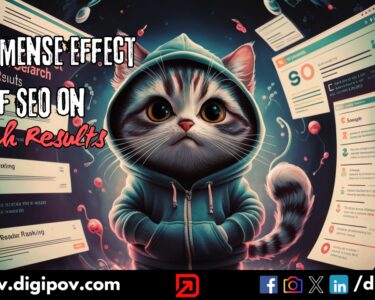In digital marketing, Content optimisation is one of the keys to your online business. Perfectly optimised content through well-directed search engine optimisation (SEO) could enhance your business ranking on the SERP (search engine results pages). It helps to attract the right target audience and drives increased traffic as well as revenue for the business.
Google’s algorithms for website ranking are changing with the evolution of technology. But, one thing is constant. It is content optimisation for your business ranking on SERP. If your content is not comprehensive and visible to the audience, you will lose your hold on the digital as well as in the offline field. So, I will share some ideas and tricks to create well-optimised content for your SEO success.
Before that, let’s have a brief idea about content optimisation.
What is SEO-optimised content?
SEO-optimised content or Content optimisation is the approach which ensures written content is modified and perfected in a way that it receives a higher ranking on the SERPs. Algorithms supporting high ranking of perfectly optimised content are complex. Moreover, they are infused with varied SEO details. One needs to be patient to identify those tricks for the best content optimisation to support SEO success.
Tricks and Strategies of Content Optimisation for SEO Success
1. Creating Well-Researched Content
A major aspect of content optimisation in SEO is initiated with good research. Additionally, the presentation ability of the content writer is also valued. Search Quality Evaluator Guidelines (SQEG) in Google have mentioned the E-E-A-T principle as one of the major aspects of content optimisation. It is not a direct ranking factor. It is a guidance on how your content should be relevantly made to appear to the target audience. E-E-A-T acronym indicates experience, expertise, authoritativeness and trustworthiness.
Experience:
Content optimisation in SEO requires valued experience among the creators regarding the topic. It indicates the creator has the proficiency to share unique insights and perspectives regarding the topic. Experienced creators have effective knowledge of including existing and updated information uniquely. They understand the way to present figures, charts, visuals, statistics, etc for creating well-established content that can engage the target audience.
Expertise:
Expertise in content optimisation in digital marketing indicates the creator’s in-depth knowledge of understanding the meaning of each aspect of the topic. It is about showing subject matter expertise by the creator for the field they are working. Often presence of formal qualifications is demanded among creators. It is to determine their suitability for creating well-researched content for SEO.
Authoritativeness:
It is about credibility and reliability presentation in content for its optimisation. Strategic optimisation means refining the content with evidence-based information. For this, you need to identify credible sources from where you would gather potential evidence to create your content. It is important to later use them as a reference to prove your credibility to the audience.
Trustworthiness:
A well-optimised content is required to be precise, explicit and presented with integrity. Misleading information may give your SEO an initial success, but it would later lead to a spammy website out of detection of unethical activity by Google’s algorithm.
It’s your business. You need to be responsible apart from your creators to generate original and ethically optimised content. Never give extensive research a miss to find out valued points for content creation.
2. Regularly Updating Content
A free content optimisation trick for SEO success is regular updating of content. It is a key ranking factor as it indicates your dedication for modifying and maintaining relevant content for your webpage. Regular updating of content creates improved user experience. It keeps them informed about all changes occurring in your products or industry of interest. This enhances trust with your business. It later shows up in the form of lower bounce rate and increased conversion rate for your business.
Arrange weekly, monthly or quarterly content updates as part of the content optimisation strategy for SEO success. Consistency should be your key. Apart from that, monitor your improvements with each new content. It is to identify the efficiency of your content to satisfy target audience. Updating content for SEO does not mean only including new content. Revisiting older content to add new details makes them relevant again which could boost your SERP rankings.
3. Targeting Relevant Keywords
A major part of content optimisation in digital marketing is targeting relevant keywords in content. As simple as it may sound, relevant inclusion of keywords is a tough choice to make. However, do not lose your brain over finding relevant single keywords. Google may pay attention to keyword used for content ranking but also focuses on its natural availability in the content. Keyword stuffing is Black Hat SEO strategy. It makes any search engine ignore your content.
Keywords are phrases and words used by people to find relevant information for their queries. Select keywords for your content based on the size and brand authority. If you a small business initially orienting in an industry, selection of high-competitive keywords to optimise your content to rank high would be nearly impossible. Because they will be used by established brands which are easier for them to rank out of wide content variety and other better SEO features.
To find relevant keywords, try using tools such as SEMRush, Moz, Google Keyword Planner, Ahrefs and others. They present detailed search volume, competitiveness, quality and many other information about keywords. It eases your ability to select the best keywords for content optimisation in SEO success that could drive high traffic to your website.
A suggestive content optimisation strategy related to keyword use is the identification of long-tail keywords compared to short-tail ones. Long-tail keywords have lower competition and high-match for searcher’s queries. Its inclusion leads to easy wins for content better content positioning on SERPs. Well! do not entirely ignore the short-tail keywords and identify those with high to medium competition. You need to include them in your content to attract increased traffic to your website.
4. Apply Different Keywords Based on Intent
You need to understand the intent of your content as each one demands different keywords and content presentation. There are mainly four types of intent: Navigational, Transactional, Informational and Investigative. Google supports best ranking to content that meets the expectations of the people. And you cannot create the best content optimisation strategy without understanding what they need. For example, an audience may be looking for information about product details of a specific brand. If you try to use common keywords to present your content in this situation, it will never reach your audience or neither rank on SERP for their search. So, plan accordingly to optimise your content based on user search intent.
5. User-Friendly Content Structure
Structuring your topic in a user-friendly way is one of the effective content optimisation strategies. It helps in maintaining a logical flow while answering relevant queries regarding the topic. Focus on structuring based on different headings and sub-headings along with mapping out the entire content writing plan before initiating writing. Breaking down the topic into various subheadings helps to improve readability. Moreover, the audience can easily navigate to the parts of the content which are essential for them. Website crawlers also experience feasibility to understand your topic from the sections to effectively rank it higher on SERPs.
You can create a mind map of the entire content to be written which helps in better optimisation. Never forget to mention your focus keyword on each heading at least once. SEMRush provides an opportunity to create an entire content plan. Grammarly helps in removing critical grammar issues to support creating error-free content. Apart from them, a few other content optimisation tools are Ahrefs, SurferSEO, Yoast, Hemmingway Editor and others.
6. Creating Enthralling Visuals
Remember visuals have immense scope to attract even the uninterested audience to get through your content. So, Google makes it a major ranking factor for website ranking. So, your content optimisation strategy needs to focus on the type of visuals used to reflect the meaning of content. To let your content rank higher in SERP, add Alt text to any images added within the writing. Images should be limited to pictorial representations of thoughts. Try adding infographics to explain statistical data as it creates better content presentation and understanding among the target audience.
In creating enthralling visuals within the content, videos are also to be used. They help in better explanation of content to the users through audio and visuals.
7. Create and Add Relevant Links
A content optimisation strategy would also be creating quality backlinks and adding effective internal links. Internal links are connections between one page to another of the same website. Backlinks are connections between another page of a website with yours. Appropriate linking helps the chatbots to easily find your content and rank them. It also helps the audience to develop better understanding of the content which enhances user experience that also helps in ranking content. Better user experience makes the audience add positive comments and reactions on your content. It also promotes increased sharing on different platforms. It promotes Google’s algorithm to even rank your content higher as they are a user-focused channel which values consumer experience. Add backlinks which have high domain authority (DA) as they indicate quality links. You can check DA of sites to be backlinked through Ahrefs. You can also reach out to other websites to backlink your content as part of a content optimisation strategy for SEO success.
A content optimisation example to explain interlinking would be writing benefits of Ashwagandha while adding internal links to content that explains the concept and features of Ashwagandha. It will help the audience to get the background of the Ashwagandha while learning its benefits.
8. Create Better Title and Meta Description
In content optimisation, the technical part of SEO also plays an essential part. You can create perfectly written content, but a poor title will ruin all your effort. Make relevant titles within the suggested character length by Google to stand out in the ranking game. Also, ensure your pages with visuals are not dragged to the extent that it takes forever to load them. Remember page loading to a vital factor in optimising your content. Organise your meta description with unique words and keywords to ensure quality content optimisation. Place your alt tags and avoid broken links which are bad SEO.
9. Enhance Readability and Avoid Errors
Readability indicates the extent to which your content is easier to understand. Your content should communicate with the audience at a basic level so that even laypersons can understand what you wish to express. Do not go for long sentences. Always consider the use of simple words and avoid jargon. It is best to determine the detailed demographics of your target audience. Nowadays AI have acted immensely in helping content optimisation to avoid errors. Use them at your convenience and create well-focused content.
10. Effective Promotion Techniques
Content optimisation for SEO success does not end with its effective creation and management. It also involves the use of promotion techniques to reach the target audience. And one of the best ways is using social media. You can post links to your content on relevant social media pages and initiate interaction with the audience to make them view and read the content. As relevant connections are created, increased traffic is seen for the content. Increased engagement raises the page authority which helps it to rank higher on SERPs showing SEO success.
Frequently Asked Questions (FAQs)
1. What are the three key SEO aspects of content optimisation?
The three key aspects to be followed are targeting relevant keywords based on traffic, development of relevant and consistent content.
2. What are the ways to improve existing content for SEO success?
You can improve your existing content through an initial audit to identify areas to be changed. Then repurpose your content, modify interlinks, update backlinks and images to enhance the existing content.
3. What are the factors for creating quality content for SEO success?
The key factors for creating optimised content are personalised content development, improved readability, short paragraphs, simple sentences, informative data, better visualisation and consistent tone.
Conclusion
In whatever search engine you try to digitally establish your business be it Google, Bing, Baidu, Yandex, etc, well-optimised content will always be your win-win situation. Above mentioned are a few of the free content optimisation tricks for SEO success. I cannot claim these are absolute as there are wider factors which drive SEO success for content. But these are key parts of content optimisation in digital marketing for SEO success. Explore and remind them.



